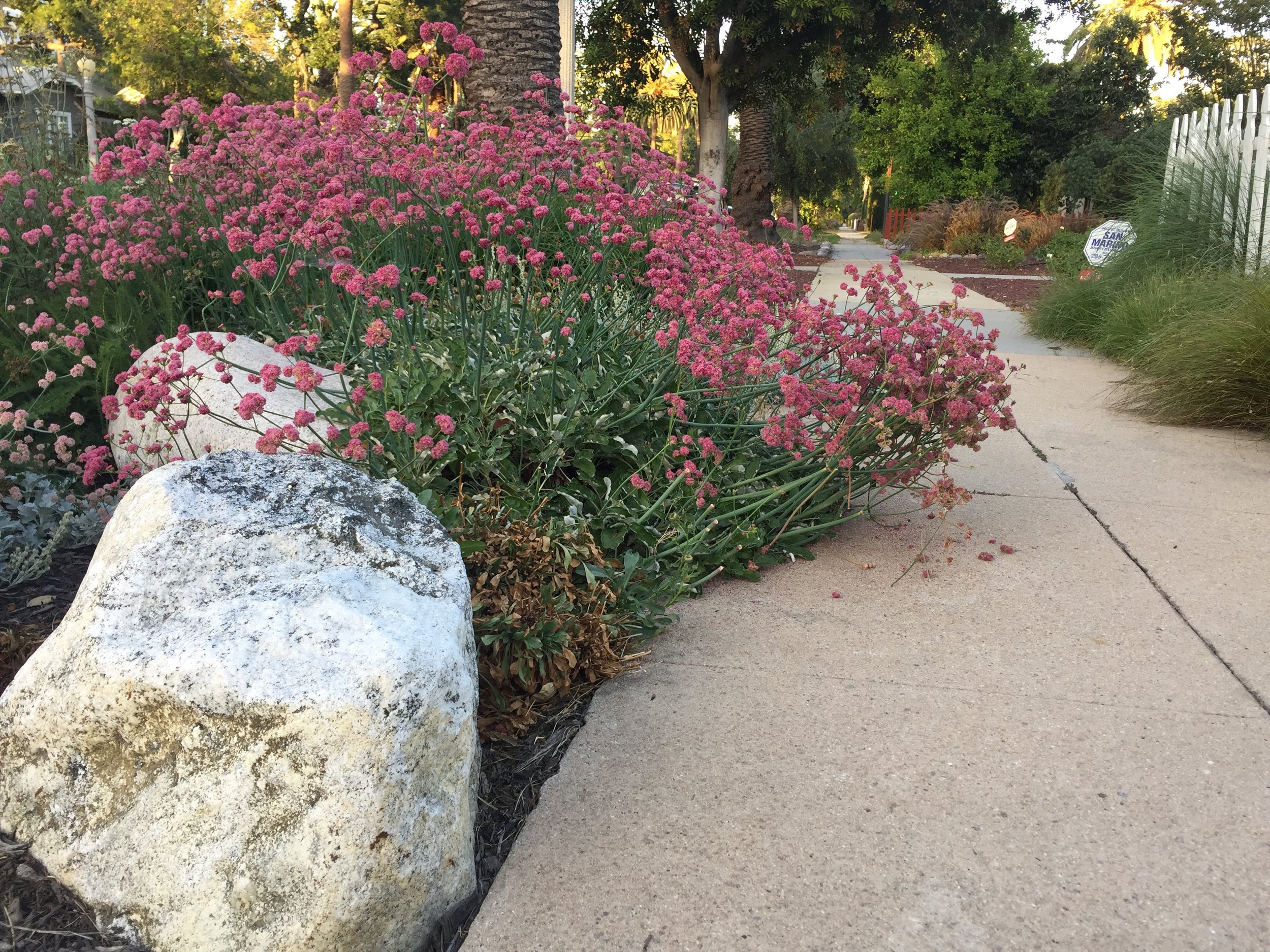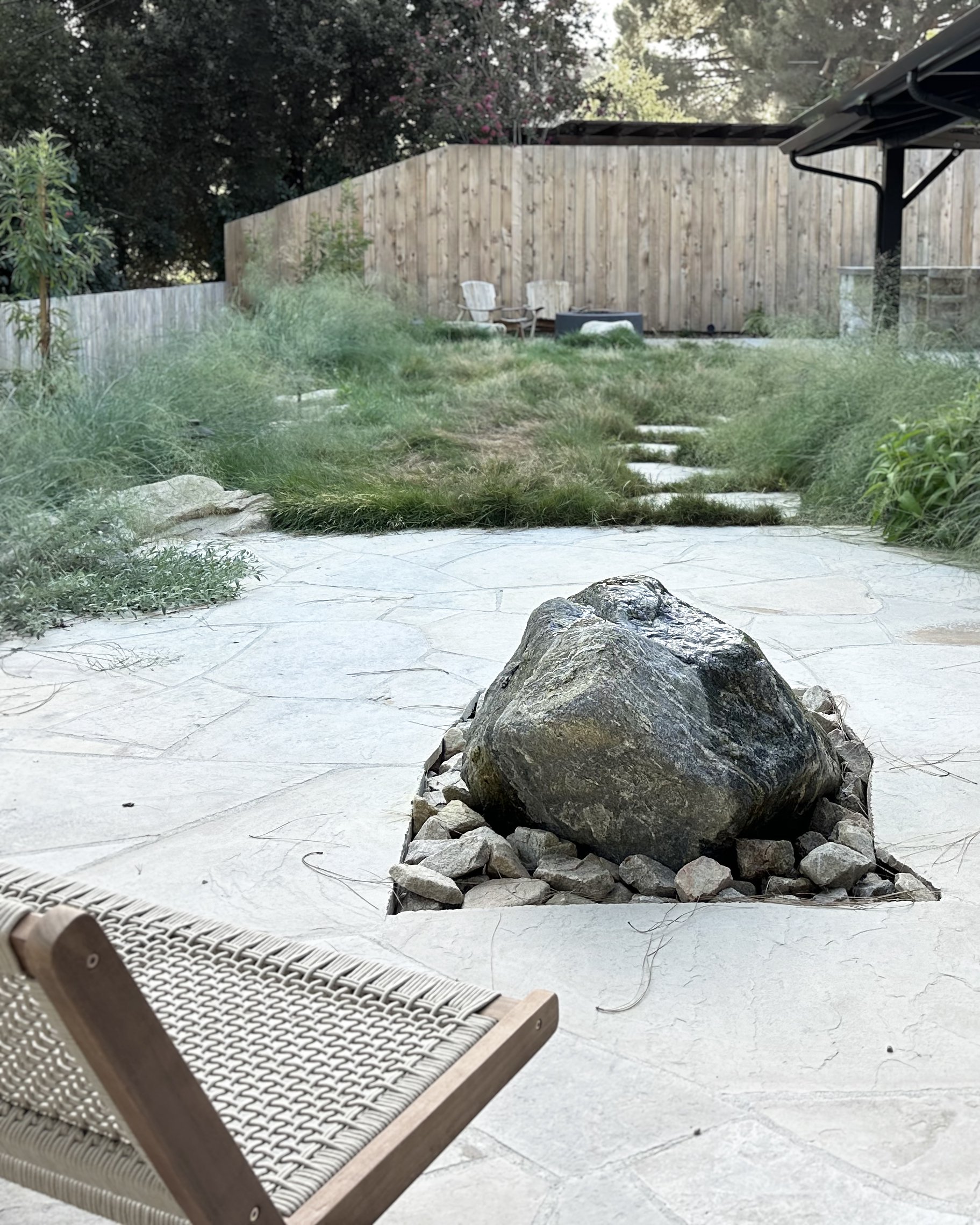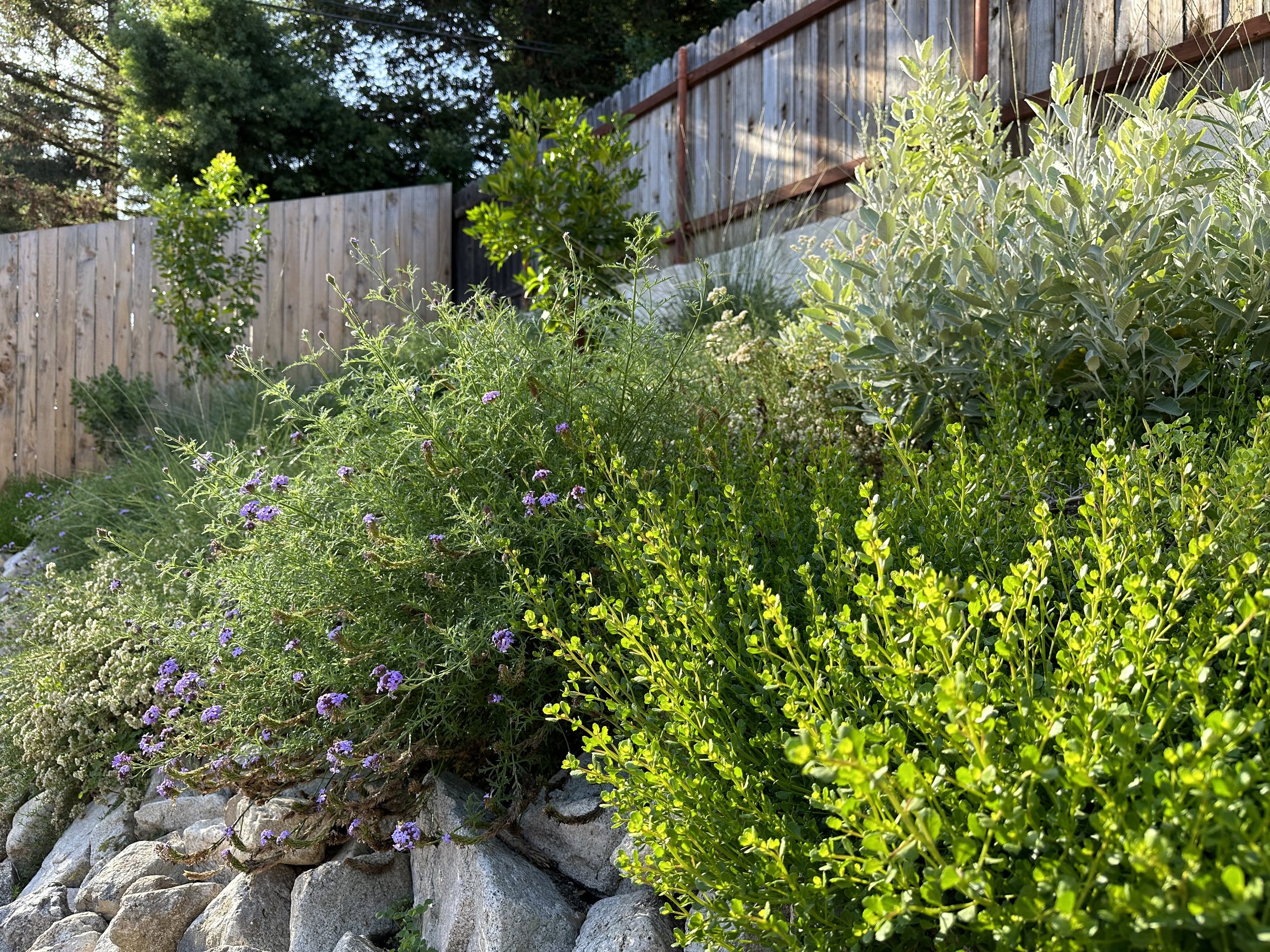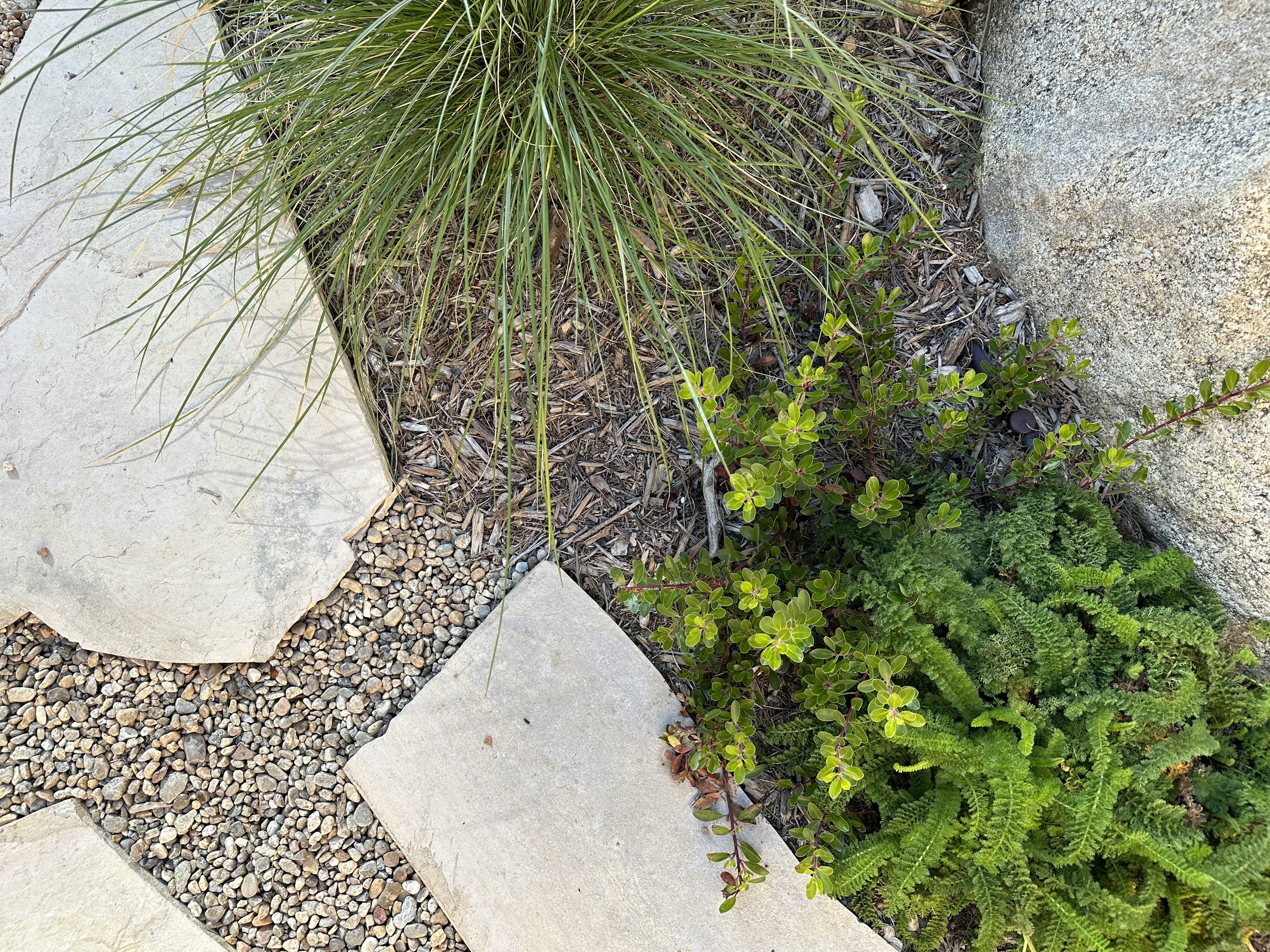Field + Studio: Fall 2023
CRAFT LA is a collaboration of experienced landscape architects, designers, and naturalists orchestrating deeper and more meaningful interactions with the natural environment. We bring Big Nature to all spaces by designing through a lens that engages the natural environment – a biodiverse landscape rich in texture and fragrant native plants, teeming with local song birds, butterflies, and other beneficial critters.
Field + Studio is a journal to share our thoughts, seasonal observations, resources, and studio happenings.
Hello and Happy Fall!
With the seasonal transition and the cooler autumnal climate, we are switching gears and taking in this time of year by going for long bike rides and planning for fall planting. It's looking like another wet rainy season, when California native plants like to be planted to get established, so let’s try to maximize our precious and free rainfall.
We’re wishing you a lovely respite filled with cool nights and warm cider.
xo, the CRAFT LA team
Plants of Note
An ode to our love for California native plants, the plants that have been evolving in our region for millennia, acclimated to our specific climate, and symbiotically bound to the wildlife around us. We want to celebrate these plants (and animals) with you, our dear friends.
“Paying attention is a form of reciprocity with the living world, receiving the gifts with open eyes and open heart.” —Robin Wall Kimmerer
Eriogonum fasciculatum, California buckwheat
Hi friends, Stephen here — Today, I bring you an extra special plant! It’s the rosemary of the native plant industry, and highly regarded in landscape architect’s circles as a “go-to/bulletproof” native plant - Buckwheat, or as the botanically inclined refer to it, Eriogonum fasciculatum.
But instead of talking about this specific species of Buckwheat, I’m going to open it up to the many species of this beautiful genus. I’m so in love with this species (or should I say genus?), it’s not even funny. It has loads and loads of habitat value - and that’s incredibly important if we want this planet to survive for generations to come. Insects absolutely love this plant. And guess what? Insects pollinate nearly all of our plants!! Here is an excerpt from one of our favorite authors, Douglas W. Tallamy, from his book Nature’s Best Hope.
Insects pollinate 87.5 percent of all plants, and 90 percent of all flowering plants, and plants turn energy from the sun into the food that we and an unimaginable diversity of birds, mammals, reptiles, amphibians, and freshwater fishes need to exist. Insects are also the primary means by which the food created by plants is delivered to animals. Most vertebrates do not eat plants directly; far more often, they eat insects that have converted plant sugars and carbohydrates into the vital proteins and fats that fuel complex food webs.
Simply said, we need insects - WE ALL NEED INSECTS. So, let’s stop destroying them and instead welcome them into our gardens with open arms. And, if saving the world isn’t enough of a reason to plant buckwheat, here are a few more.
Longstem buckwheat, Eriogonum elongatum in Angeles National Forest
Eriogonum grande var. rubescens, red buckwheat is a common garden variety.
Buckwheats come in all shapes and sizes. From sprawling, and mounding shrubs, to prostrate ground hugging perennials. Flowers range from yellow, to creamy white, pink, and red. Buckwheat’s typically do well in full sun and with well-draining soil (a few even tolerate clayey soil). We like to use low-growing buckwheat varieties, like Eriogonum fasciculatum (California buckwheat) in masses, where their summer blooms (did I mention most of them bloom in the summer months?!) are a welcome sight while much of the garden moves into summer dormancy. California buckwheat and several other species of the genus also provide garden interest in the Fall months, when their flowers go to seed, changing to a spectacular coppery rich display - see Saint Catherine’s lace too!
If you want to learn more about buckwheats check out our fiends at the links below, or give us a holler. We’re always willing to offer a hand.
Cheers to Big Nature,
—Stephen
Online resources for California Buckwheat and other species of the genus:
Calscape
Las Pilitas Nursery
Theodore Payne Foundation (scroll down to Eriogonum)
Tree of Life Nursery (download their plant catalog)
Castle Road: Client Interview
MANZANITA, a recently completed (April 2023) garden project in La Canada Flintridge, is a beautiful, client-restored mid-century ranch house. Mindy and Bonnie, two of our favorite people, approached us about reenergizing the exterior space. As a growing family, with two little ones, and a doggo, they were hoping for a space to accommodate loads of play, entertaining, and leisure time. They requested a garden design with a pool, outdoor grill, respite breakfast nook, fire pit, and loads of new plantings to target local birds and butterflies.
Mindy and Bonnie were kind enough to grant us a short interview about some of the challenges and highlights of their new garden space. We hope you enjoy it! We also snapped a few photos of the garden, and we can wait to snap a few official ones as this garden matures.
What magic are you seeing in the garden? Any observations? The hummingbirds that come around the Chilopsis linearis (Desert Willow) are incredible, and the scent of the flowers is so sweet and lovely! We’ve also noticed a lot of dragonflies, butterflies, and monarchs in the yard along with birds that visit the fountain.
How do you enjoy the garden? Does it appeal to the senses? The Lepechinia fragrans (Fragrant Pitcher Sage) is a win forever in the scent department. Same with the Salvia leucophylla that we planted in the pots by the office, even being in close proximity smells so, so good. The Chilopsis linearis (Desert Willow) also has a light sweet scent that is so nice.
Do you spend more time outdoors than you did before? So much more! We are grilling almost nightly, enjoying swim time with the kiddos and friends, the hot tub at night, and our morning coffee by the fire pit.
What do you love most about your native garden? We have loved seeing new flowers pop up and the changing landscape over the season. At first it was the surprise of color from the various yarrows, and now it’s the flowering buckwheat and growing mallow. It’s exciting to see the changes and surprises from our first season of growth.
Tune In, Tune Out: Recommendations
Books + Podcasts —
Nature’s Best Hope: A New Approach to Conservation That Starts In Your Yard by Douglas W. Tallamy —Stephen
Finding the Mother Tree by Suzanne Simard —Meagan
“I’m reading a lot about community design for the class I'm teaching at USC. I just learned about landscape architects Karl Linn and Lawrence Halprin and their connections to kibbutzim and 1960s happenings.” —Mel
“Stress relief is real. I’m rocking out to Binaural Beats on Spotify” —Stephen
Samantha Irby's audiobook essay collections —Meagan
Film + Television —
“It’s baking season, so naturally, The Great British Baking Show” —Stephen
“Nerd Alert: I'm loving The Wheel of Time” —Meagan
Music —
You Are (The Oracle) by säje —Stephen
Mitski's The Land is Inhospitable and So Are We —Meagan
Glasser's Crux —Meagan
Landscape Language: What We’re Diggin’
Plants —
“I'm always impressed by manzanita (Arctostaphylos sp.). In the upper elevations, ancient big berry manzanita, Arctostaphylos glauca, are one of my all time favs. If you camp/glamp check out Chilao's manzanita campground for some serious monsters.” —Stephen
“I've been learning about the Astralagus/Milkvetch family. There are more than a hundred kinds in CA and they all work as nitrogen fixers - thank you, leguminous friends!” —Meagan
“Calystegia macrostegia (Island Morning Glory) and Cornus nuttallii (Pacific Dogwood)!” —Mel
Materials —
“I’m fascinated with metal roofing.” —Stephen
“I'm hoping to get my hands dirty building a Cob oven sometime soon.” —Meagan
“Carbon sequestering concrete” —Mel
Join Us…
Nov. 3: Morning Nature Walk in Lower Arroyo Park
Please join us on Friday, November 3 at 8 a.m. for a morning nature walk in Lower Arroyo Park. Let’s talk native plants, observe local plant communities in the Lower Arroyo Seco, and meet friends old and new. RSVP here.
Dec. 7: Happy Hour + Native Plant Trivia at Eagle Rock Brewery
Join us on Thursday, December 7 at 5 p.m. for happy hour and native plant trivia at Eagle Rock Brewery. Plant nerds commune! RSVP coming soon, so stay tuned.











